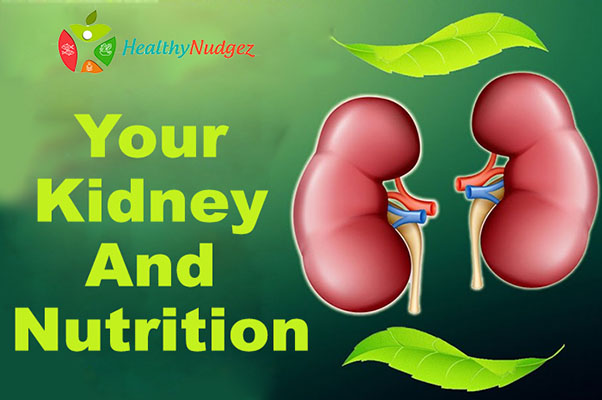Your Kidney and Nutrition
What is CKD?
It is the chronic kidney disease, in which the kidney’s are unable to filter wastes from blood. There are 5 stages of CKD, each stage represents a level of kidney damage. Stage 1 as least severe and stage 5 as most severe.
Nutrition plays a huge role in CKD. Just like diabetes, people with Kidney disease need to follow a restricted diet but not a nutrient deficit diet.
If you have CKD, you may need to limit certain nutrients in your diet such as sodium, phosphorus, or potassium. You should limit saturated and trans fats too.
Nutrients to be taken care by Renal patients are:
Sodium:
Sodium regulated in the body by kidneys, and it helps control body’s fluid balance. Eating less sodium helps lower blood pressure and may slow down CKD. Try to keep your blood pressure below 140/90 mmHg. One of the kidney’s important jobs is to filter sodium out of the body and into the urine. Damaged kidneys cannot filter as well as healthy kidneys can. This can cause sodium to say in your body and make your blood pressure go up.
Phosphorus:
In chronic kidney conditions, phosphorus can build up in your blood, making your bones thin, weak, and more likely to break. It can cause itchy skin, and bone and joint pain. Most people with CKD need to eat foods with less phosphorus than they are used to eating.
Potassium:
In some people with CKD, kidneys may not remove extra potassium from the blood. Some medicines also can raise your potassium level. Your food choices can help you lower your potassium level. People do not experience any different symptoms when their potassium is high. It can only be checked through blood test. The level of potassium in your blood should be between 3.5 to 5.1.
Protein:
When your body uses protein, it produces waste. This waste is removed by the kidneys. But too overloading your kidneys with excess protein which results in heavy load on kidneys to excrete the waste out. So, people with impaired kidney function need to eat less protein.
How to control the consumption of Sodium, Phosphorus, Potassium and protein in a renal patient’s diet.
Sodium:
- Buy fresh foods instead of canned or packaged food.
- Use herbs and sodium- free seasonings in place of salt.
- Rinse canned vegetables, beans, meats, and fish with water before cooking to remove extra sodium.
- Do not buy frozen foods and readymade gravies or soups as sodium additives can be used to make them last longer.
Phosphorus:
- Know what foods are lower in phosphorus.
- Eat smaller portions of foods high in protein at meals and for snacks—poultry and fish, dairy foods, beans and lentils, nuts etc.(or in moderation if asked to reduce protein intake)
- Eat fresh fruits and vegetables- if u are not asked to restrict your potassium intake.
Potassium:
- Choose fruits and vegetables that are lower in potassium such as apple, papaya, pears, watermelon cucumber, bottle gourd, pumpkin, carrot, cabbage, bell peppers.
- Avoid taking juices, soups specially premix packs and also tomato products such as tomato juice, sauce, soups.
- Use leaching technique for dark green leafy vegetables before cooking.
Protein:
- Protein requirement depends on the severity of the disease as well as person’s weight.
- For individual protein requirement, the person should consult their dietician or doctor. They will tell you what amount and types of protein are right for you.
Another important key points to keep in mind while practicing good nutrition are:
- Read and check the nutrition facts label for sodium, potassium on packaged foods.
- Look for claims on the label, like low saturated fat or sodium free.
Contact: Nutritionist in Delhi

